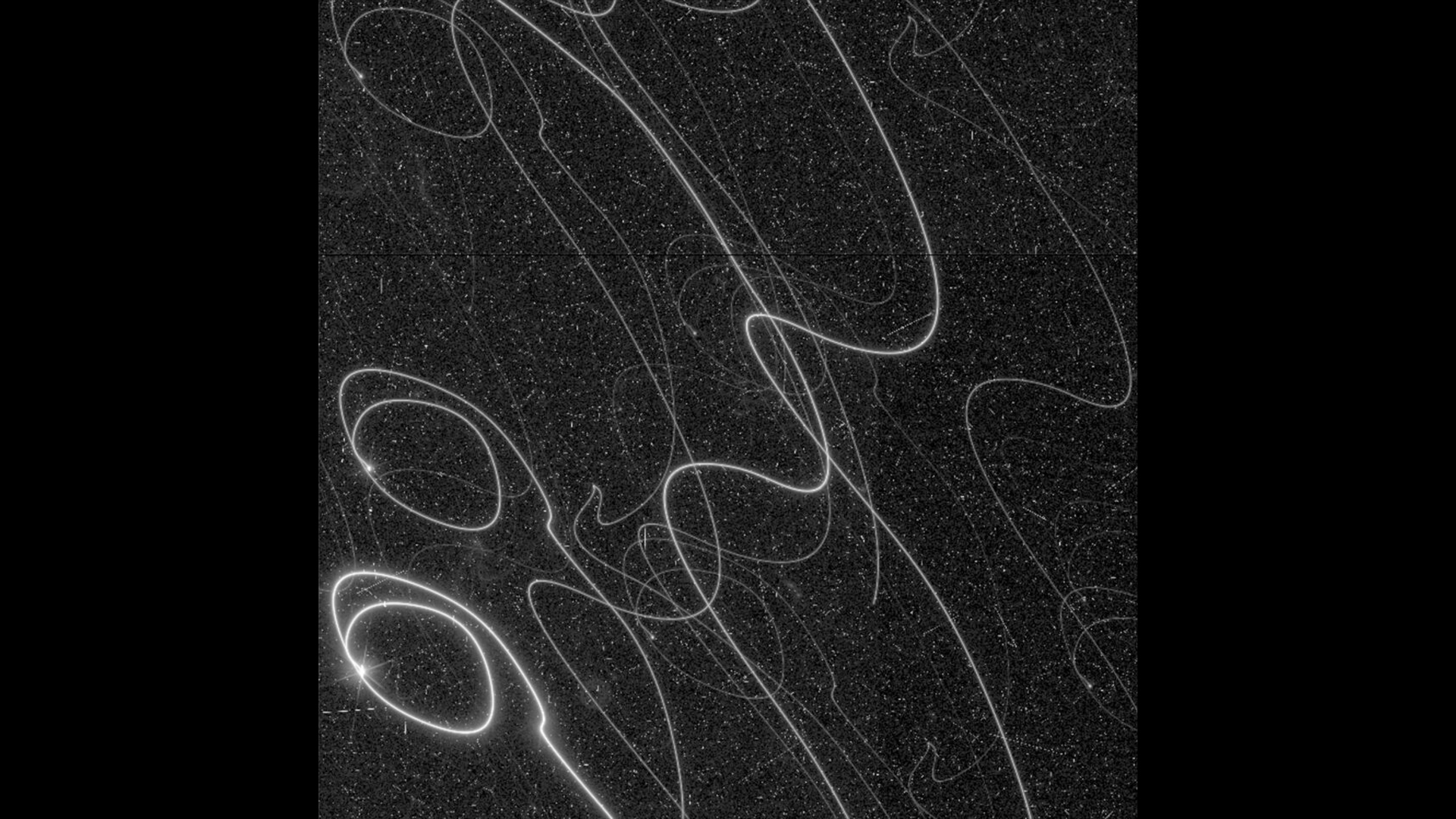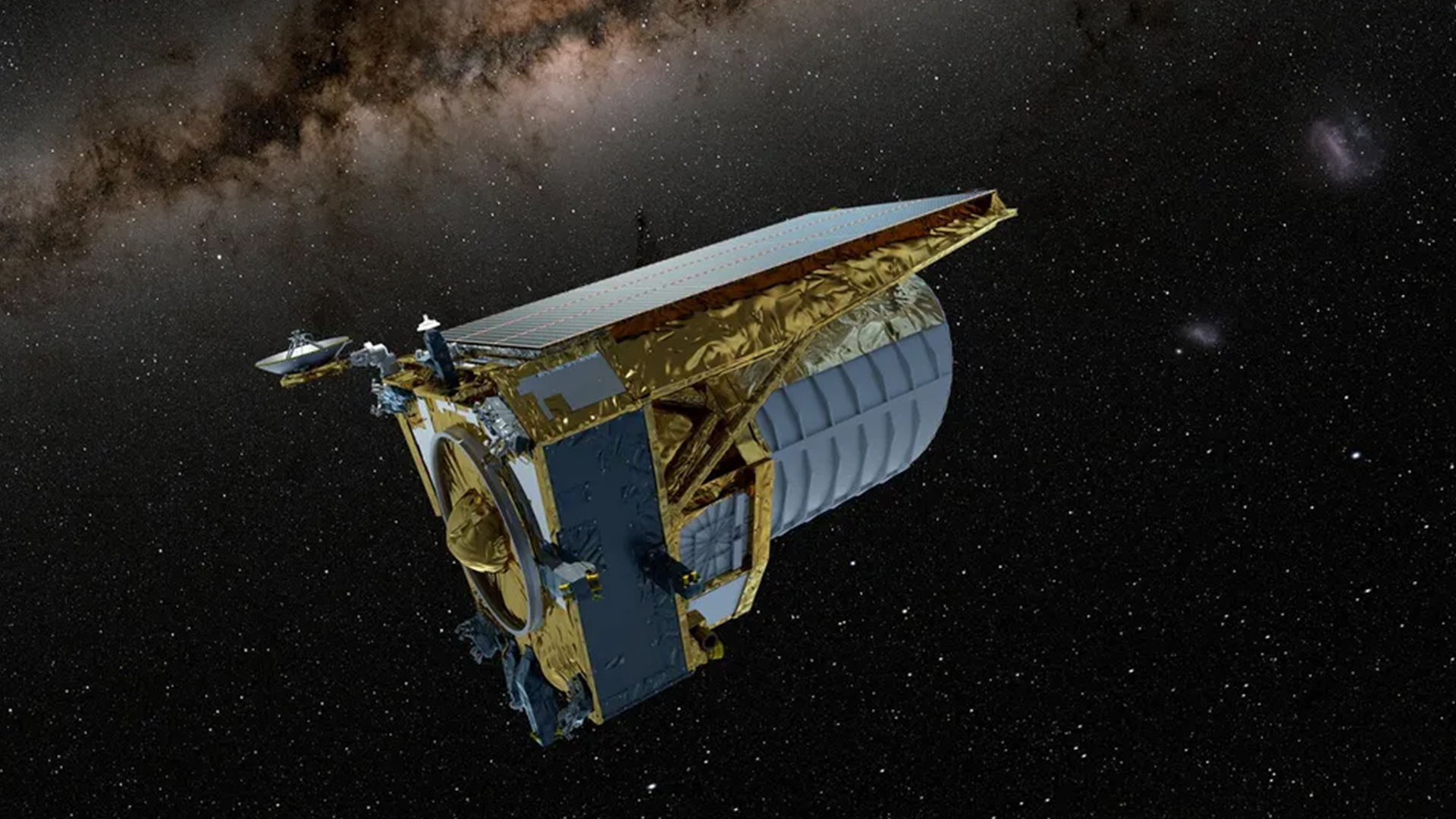ESA scientists finally resolve glitch that caused Euclid spacecraft to 'doodle' through space
The European Space Agency's dark energy and dark matter spacecraft has once again found its guiding stars and is preparing for full "science mode."

The European Space Agency's (ESA) dark universe detective, the Euclid spacecraft, is on track after locating its guiding stars, which it lost as a result of cosmic misidentification.
The satellite can now begin investigating dark matter and dark energy, which are some of the greatest mysteries in cosmology. Dark matter accounts for 85% of the matter in the universe but is effectively invisible, and dark energy causes the cosmos to expand at an ever-increasing rate.
Euclid launched to investigate these cosmological mysteries, sometimes collectively known as the dark universe, on July 1 and took a four-week journey to Lagrange point 2, a gravitationally stable point in the Earth-sun system. Although Euclid reached its destination safely, its operators noticed a problem after the spacecraft took its first incredible images of the cosmos: Euclid's Fine Guidance Sensor was having trouble finding its guiding stars, which Euclid uses for navigation.
The cause of this issue was cosmic rays — charged particles that the sun emits during periods of high solar activity. The cosmic rays were impacting the Fine Guidance Sensor, creating signals that Euclid was incorrectly identifying as stars. In addition, stray light from the sun and solar X-rays were interfering with the spacecraft. As a result, artifacts caused by this interference occasionally outnumbered the real stars being spotted by Euclid, meaning the spacecraft couldn't resolve the star patterns it needed to navigate.
A striking example of the effect of this hiccup on Euclid's operations is an image of a distant star field that shows strange loops and lassos, reminiscent of a child's doodles (shown above). Although beautiful, these doodles aren't helpful in the search for the subtle patterns in distant galaxies and star clusters that could reveal clues about dark energy and dark matter.
Ironing out Euclid's teething troubles
These types of glitches are often experienced during the initial phase of a spacecraft's operations, known as the commissioning phase. Teams at ESA mission control have been working around the clock to better equip the craft for its space-based environment.
The mission team created a software patch that was first applied to an electric model of Euclid here on Earth before being tested on the real thing at Lagrange point 2, which is around 1 million miles (1.5 million kilometers) from home, ESA officials said in a statement. After being updated and undergoing 10 days of testing in orbit, the Fine Guidance Sensor is working as intended, and Euclid's guide stars have once again been located.
Get the world’s most fascinating discoveries delivered straight to your inbox.
"Our industrial partners — Thales Alenia Space and Leonardo — went back to the drawing board and revised the way the Fine Guidance Sensor identifies stars," Micha Schmidt, Euclid spacecraft operations manager, said in the statement. "After a major effort and in record time, we were provided with new on-board software to be installed on the spacecraft. We carefully tested the software update step by step under real flight conditions, with realistic input from the Science Operations Centre for observation targets."
Euclid is now ready to restart its all-important performance verification phase, which was interrupted in August , during which final testing will be performed.
"The performance verification phase that was interrupted in August has now fully restarted, and all the observations are carried out correctly," Giuseppe Racca, Euclid project manager, said in the statement. "This phase will last until late November, but we are confident that the mission performance will prove to be outstanding and the regular scientific survey observations can start thereafter."
This is the last step before Euclid can start investigating the dark universe. Euclid will do this by examining around a third of the sky over Earth and by looking back over 10 billion years of cosmic history, mapping 3D models of galaxies to see how the 13.8 billion-year-old universe has taken shape and what role dark matter has played in this evolution. Euclid will also look at large-scale galactic disturbance to see the influence of dark energy as it pushes galaxies apart faster and faster.
"Now comes the exciting phase of testing Euclid in science-like conditions, and we are looking forward to its first images showcasing how this mission will revolutionize our understanding of the dark universe," Carole Mundell, ESA's director of science, said in the statement.
Originally posted on Space.com.
Robert Lea is a science journalist in the U.K. who specializes in science, space, physics, astronomy, astrophysics, cosmology, quantum mechanics and technology. Rob's articles have been published in Physics World, New Scientist, Astronomy Magazine, All About Space and ZME Science. He also writes about science communication for Elsevier and the European Journal of Physics. Rob holds a bachelor of science degree in physics and astronomy from the U.K.’s Open University





